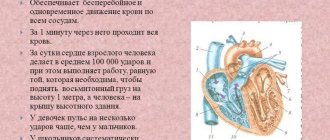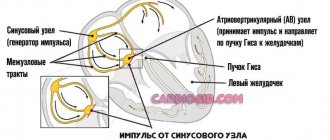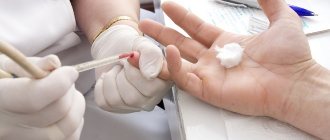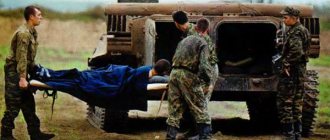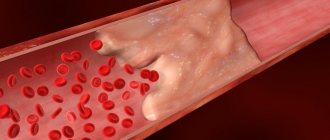Stroke is one of the most dangerous diseases of the brain: in Russia alone, 500,000 people are hospitalized with this diagnosis every year. Fortunately, it can be avoided.
Symptoms and signs of pre-stroke conditions in women and men can warn of impending hemorrhage.
However, people often mistake the warning signs of a stroke for poor health. The main danger of this condition is that if the process is not stopped in time, a stroke will occur, many of the consequences of which are irreversible. As a rule, the disease affects people of mature and elderly age - from 40 to 70 years. The trigger for the development of an attack of cerebral hemorrhage can be excitement or strong anxiety.
Description
Pre-stroke is a temporary deterioration in blood supply to the brain (brain). The painful state of an impending stroke has a number of characteristic signs that can be used to identify a crisis and prevent it in advance. The body can turn on self-regulation mechanisms, thanks to which the symptoms disappear without a trace within 24 hours, and the functions of the brain are completely restored.
If circumstances are unfavorable and medical care is not provided, cerebrovascular accident can result in a stroke - hemorrhagic or ischemic. This condition in some cases leads to death.
Stroke (ICD-10 code – I63-I64) is characterized by an acute disruption of cerebral blood supply, usually leading to damage and death of nerve cells. Body functions corresponding to the affected areas simply disappear. A person may have problems with speech, memory, vision, movement, balance, swallowing, etc.
Types of strokes:
- hemorrhagic - occurs as a result of rupture of an intracerebral vessel, bleeding into the surrounding tissues, formation of a hematoma, pressing on nearby areas of the brain and causing disruption of their functioning;
- ischemic - appears as a result of blockage of a blood vessel by a thrombus, atherosclerotic plaque or embolus, while the blood supply to the brain area stops and necrosis occurs.
During a microstroke, only small areas of the brain are affected. The duration of the painful condition is from 5 minutes to several hours. In this situation, blood supply is disrupted only in the smallest vessels.
Stroke is an acute vascular accident in the brain. Lost functions may be restored after some time, or they may disappear forever. If a person shows signs of a pre-stroke, he urgently needs to provide first aid and call an ambulance.
Focal symptoms of the disease
One or another part of the brain is responsible for specific processes occurring in the body. When normal blood flow ceases to be provided in one of them, specific symptoms are observed. This is what the doctor relies on when making a diagnosis. You can find out which area is affected by the nature of the clinical manifestations. Frontal cortex:
- convulsions;
- slurred speech;
- inability to make voluntary movements;
- a sudden change in habitual behavior.
Parietal lobe cortex:
- tactile sensitivity is lost;
- skills in basic arithmetic, writing and reading are lost.
Temporal lobe cortex:
- deafness develops, tinnitus is recorded, and certain hallucinations appear;
- Memory is impaired and a feeling of déjà vu develops.
Symptoms are nonspecific. Rather, for the doctor, these are additional signs that help make a diagnosis.
Causes
If a person shows signs of a pre-stroke condition, there are a number of reasons for this. These include: strong feelings, heavy physical activity, unhealthy lifestyle and bad habits. Most often, a pre-crisis situation is observed in patients with a number of serious pathologies. This group of patients belongs to the risk group, that is, to the category of people who need to be attentive to their health.
The following factors can precede a crisis:
- prolonged exposure to stress or severe nervous disorder;
- hard physical labor, overwork;
- addiction to alcohol and tobacco;
- uncontrolled use of medications;
- severe hypothermia or overheating of the body;
- non-compliance with diet, fatty, spicy foods, lack of fresh vegetables and fruits in the diet;
- changes in weather conditions, atmospheric pressure, magnetic storms, etc.
Risk group:
- hypertonic disease;
- obesity;
- diabetes;
- heart rhythm disturbance;
- high cholesterol;
- blood clotting disorder;
- sedentary or bedridden patients;
- advanced age;
- gender (crisis occurs more often in men than in women);
- genetic predisposition (parents have had a stroke or heart attack);
- psychosis, depression;
- migraine;
- atherosclerosis;
- vascular diseases;
- angina pectoris, heart attack, ischemic disease.
Stroke can occur at any age, even in young people suffering from a number of chronic diseases. If a girl, boy or child is at risk, they need to constantly monitor their well-being in order to recognize an approaching crisis. If pre-stroke signs appear, you should consult a doctor.
Risk factors
They do not directly cause the onset of a pre-stroke condition, but they increase the likelihood of it almost three times, and even more (depending on the specific moment).
- Smoking.
- Old age 60+. The pathology also occurs in persons slightly younger, minus 10 years.
- Being male.
- A history of cardiovascular diseases, as well as endocrine diagnoses.
- Unfavorable family history, burdened heredity.
- Alcohol abuse, drug addiction.
- Inadequate sleep.
- Unbalanced diet.
- Acclimatization, moving to another geographical region with different weather and temperature conditions.
- Menopause in women, as well as menopause in the stronger sex. Hormonal changes, attenuation of the body’s basic reproductive functions.
The patient can correct most of the factors presented on his own. Apart from age.
But in this case, it is enough to regularly consult with a neurologist and other specialists. According to indications.
Symptoms
There are 2 types of transient cerebrovascular accident (TCI): transient ischemic attack (TIA) and cerebral hypertensive crisis. The symptoms of these two pre-stroke conditions are different.
TIA is the initial stage of an ischemic stroke. The reason is a narrowing or blockage of the artery that supplies the brain. The clinical picture of the condition depends on the vascular area in which the decrease in blood flow has occurred.
Acute hypertensive encephalopathy is an independent type of focal neurological disease when a pre-stroke occurs due to a sharp increase in blood pressure (BP). The blood pressure level in patients is high, it is equal to 180/120 or 200/140. In this condition, the circulatory network of the brain becomes filled with blood, and the permeability of the vessels increases and fluid passes through their walls.
Pre-stroke - main symptoms of TIA:
- numbness of the face and limbs;
- pallor;
- weakness;
- weakening of the pulse;
- facial asymmetry – one of the corners of the mouth goes down;
- speech disorder;
- stunned state;
- a person may not recognize acquaintances;
- vision problems: double vision, blurry pictures, loss of lateral vision;
- pain in the heart area;
- unilateral paresis of the limbs or individual muscle groups.
How to recognize a pre-stroke from the outside:
- the patient cannot smile;
- the mouth is curved on one side;
- it is difficult for a person to pronounce his name or repeat a phrase;
- speech is slurred and distorted;
- he cannot raise both arms up and keep them in a raised position due to weakness;
- If you ask to stick out a straight tongue, you won’t be able to do it; the organ will be curved.
Pre-stroke condition - the first symptoms of a hemorrhagic stroke:
- a sharp increase in blood pressure;
- headache bursting from the inside, which begins in the back of the head;
- nausea and vomiting;
- loss of strength, sometimes psychomotor agitation;
- difficulty breathing;
- flashing spots before the eyes;
- clouding of consciousness;
- increased sweating;
- the face becomes red or pale;
- involuntary movements;
- convulsions;
- fainting.
Pre-stroke - symptoms and first signs of the condition in women:
- dizziness;
- facial asymmetry;
- drooping lip;
- weakness of one half of the body;
- blurred vision;
- irritability and tearfulness;
- speech problems;
- clouding of consciousness.
Pre-stroke - symptoms and first signs of the condition in men:
- headache;
- numbness of the limbs and face;
- feeling of weakness;
- deterioration of health;
- impaired coordination and movement;
- stun;
- slurred speech.
Hemorrhagic stroke develops rapidly. Its main symptoms are a sharp headache, as if after a blow, and a short-term loss of consciousness. It occurs against the background of a hypertensive crisis.
Ischemic stroke develops gradually with atherosclerosis or acutely during blockage of a blood clot. The patient experiences numbness in the limbs, curvature of one side of the face, stupor, stupor and clouding of consciousness. Symptoms are precursors to a dangerous condition and must be responded to immediately, that is, call an ambulance.
General cerebral signs of pathology
Clinical manifestations of pre-stroke in women are usually divided into two large groups: general cerebral and focal. These symptoms appear first and, although they are not specific, are inherent in every patient without exception:
- severe headache of unknown origin, diffuse or clearly localized: temples, forehead, back of the head, not relieved by analgesics, can disappear on its own, which is a good prognostic sign;
- dizziness with loss of orientation in space, ataxia due to involvement of the cerebellum, frontal lobe, and hippocampus in the pathological process;
- symptoms of intoxication: nausea or vomiting (depending on the severity of the pre-stroke syndrome) of a reflex nature, provoked by ischemia;
- asthenia, drowsiness, chronic fatigue - symptoms of hypoxia as a result of impaired blood flow;
- hyperhidrosis - of a reflex nature due to abnormal expansion of the lumen of blood vessels and increased heat transfer (if the syndrome develops in outdoor conditions, it is dangerous due to hypothermia);
- pale skin, acrocyanosis, cyanosis of the nasolabial triangle - the result of autonomic disorders;
- presyncope or fainting are signs of impaired consciousness;
- neurological symptoms: increased nervousness, irritability or complete apathy.
If a woman has already had an episode of acute stroke in her anamnesis, then when the exact cause is identified, it is necessary to radically eliminate it, including surgical interventions to replace an atherosclerotic vessel, thrombectomy, stenting, without waiting for complications.
First aid
If a person has signs of a pre-stroke condition, it is necessary to urgently seek help from medical professionals. After a few minutes, the symptoms may go away on their own, but you need to wait for the doctors to arrive and undergo an examination. It is impossible to treat the victim at home with folk remedies. Before the ambulance arrives, the patient can only be given first aid.
First aid for pre-stroke:
- provide the patient with a horizontal position;
- raise your head a little, put a pillow under it;
- do not bend your neck;
- unbutton tight clothes;
- open the windows in the room to bring in fresh air;
- calm the patient;
- when vomiting, turn your head to the side;
- measure the temperature, if high, give an antipyretic (Paracetamol);
- if possible, measure blood pressure;
- if blood pressure is high, give Captopril or Nifedipine;
- if there are no medications, then to reduce the tone you need to bandage the thumb of your left hand with an elastic band, hold for 2-3 minutes, vigorously rub the hand towards the fingertips;
- Place 2 Glycine tablets under your tongue.
Doctors who arrive on call will provide the patient with the necessary assistance and give an injection. If the condition is critical, the person is hospitalized in a hospital. If not, he will be prescribed treatment at home.
What to do if you have a stroke
There are techniques that allow you to identify signs of a stroke yourself. For example, they can be used if someone becomes ill on the street and you suspect a stroke. You need to ask the person to smile, speak, raise both hands. If the victim cannot comply with your request or there is asymmetry, you should immediately call for help and list all the symptoms.
At the same time, you need to provide first aid: lay the victim down, placing a small support under his head, and free him from clothes that are preventing him from breathing. He should not eat or drink or make sudden movements. When vomiting, turn your head to the side.
Further treatment is carried out in a hospital. First, diagnostics are carried out to clarify the diagnosis; computed tomography and magnetic resonance imaging, lumbar puncture and EEG (echoencephalography), angiography are prescribed. Then conservative (basic therapy, treatment of neurological complications) or surgical treatment is prescribed.
After the end of the acute period, rehabilitation is prescribed: massage, physical therapy and other activities, depending on the degree and type of disorder. The patient is observed by a neurologist, physiotherapist, speech therapist, and psychotherapist.
The brain has neuroplasticity: with the right approach, you can recover from a stroke, restore brain function and prevent stroke complications. The key factor is timely initiation of treatment, proper rehabilitation and regular exercise.
According to WHO, about 60% of patients do not require assistance by the end of the first year, and 30% of patients of working age can return to work.
Diagnostics
To identify the causes of the pre-stroke condition, a thorough examination of the patient is carried out. Based on the diagnostic results, the person is prescribed a course of therapy.
Diagnostic methods:
- blood pressure measurement;
- general blood analysis;
- blood test for cholesterol and glucose levels;
- ECG;
- Ultrasound of the carotid arteries of the neck;
- CT and MRI – for obtaining images of the brain.
A CT scan is performed to determine the presence of hemorrhage. Based on the obtained image, the patient is diagnosed with pathology. MRI allows you to see the first structural changes in the brain. If a stroke is suspected, diagnosis is carried out within the first hour after the patient is admitted to the hospital.
Trigger factors
{banner_banstat9}
They act as direct triggers.
- Consumption of alcohol in any quantity.
- Smoking. Due to a sharp spasm of cerebral vessels, basilar, carotid arteries.
- Stress, intense mental stress.
- Excessive, inappropriate physical activity. With little or insufficient training.
- Sharp tilt. Patients with possible pathologies of the cardiovascular system need to exercise extreme caution. All movements are smooth, gradual. It’s better not to bend at the waist at all, but to squat if you need to lift something.
- Acute pain syndrome.
All points are subject to evaluation. Their independent correction is possible.
Treatment
Treatment of any disease, including pre-stroke, is carried out based on diagnostic results. Symptoms of TIA and hypertensive crisis may resolve on their own within a few minutes or hours. However, patients who experience pre-stroke conditions require medical care to prevent future strokes.
Main areas of treatment:
- preventing the risk of stroke;
- prescribing medications that reduce the likelihood of a stroke and prevent the formation of blood clots.
To reduce the risk of stroke, the patient needs to switch to a healthy diet, give up fatty foods, and replenish their diet with fresh fruits and vegetables. It is recommended to stop drinking alcohol and smoking, and get rid of bad habits. It is necessary to engage in moderate exercise daily and normalize your weight.
Medicines that reduce the risk of stroke:
- antiplatelet drugs are medications that prevent the formation of blood clots (Clopidogrel);
- anticoagulants - reduce the level of blood clotting, which leads to the disappearance of blood clots in the vessels (Warfarin, Dabigatran).
If during the examination a pathology is detected in the patient, he is prescribed treatment in order to normalize the function of the cardiovascular system, breathing, and reduce swelling of the brain. In case of ischemic attack, patients need to be treated with antiplatelet agents, anticoagulants, nootropics (Picamilon), neuroprotectors (Cavinton). Cerebrolysin, Actovegin, vitamin preparations, antioxidants and other medications that improve metabolism and tissue nutrition are used as therapy.
In case of a hypertensive crisis, drugs to lower blood pressure, diuretics, neuroprotectors, and vasoactive agents are prescribed. Often, in case of hemorrhagic stroke, surgery is performed in critical situations. In severe cases, the patient is sent immediately to intensive care.
Temporal lobe
The work of this area ensures normal memory, internal speech and mental activity, and hearing in general.
- Epileptic seizures. As is the case with those with lesions of the frontal lobes, they develop suddenly. But they last less time. Otherwise, it is not possible to notice the difference without instrumental techniques. The difference is in the localization of the pathological impulse.
- Lack of hearing. The so-called cortical deafness. The patient completely loses the ability to navigate sounds. This is a temporary phenomenon; treatment as such does not make sense.
- Lack of speech perception. Formally, there is a noise stimulus, but it is impossible to evaluate the logic of the statements, the meaning of them, and even recognize the words.
- Verbal hallucinations of the mental type. So-called pseudohallucinations in outdated terminology. The proverbial voices in my head. Associated with disruption of Wernicke's area.
It is responsible for the production of inner speech. As a result of the anomaly, the signal moves to Broca's center.
He, in turn, identifies external stimuli and perceives them as such, as outside speech. A paradoxical reaction arises.
- Memory impairments of various types. Amnesia, failures. The feeling of a repetition of something that once happened (déjà vu).
Complications
Repeated pre-stroke can lead to the development of a full-fledged stroke. The consequences of a hemorrhagic crisis are always more severe than an ischemic one. The mortality rate for this condition is much higher. Even if the patient suffered a crisis and survived, he may remain in a vegetative state for a long time.
After a TIA or crisis, the patient’s memory, mental performance, and vision are impaired. A stroke often causes coma, paralysis or paresis of certain muscle groups. A severe stroke can cause death.
Brain stem
With ischemia, life- and health-threatening manifestations develop. Like stopping breathing, cardiac activity. This is the only case when a pre-stroke in a woman can lead to death even without the death of cerebral tissue.
Additionally, it is possible to develop elevated body temperature. Thermoregulation is disrupted, the readings fluctuate, from 35 to 38 degrees Celsius or more.
The sign is also considered threatening and requires urgent correction in a hospital setting. The patient is constantly monitored for timely resuscitation.
Prevention
To avoid negative consequences, you need to engage in stroke prevention. People suffering from hypertension or other vascular diseases need to avoid physical and emotional stress, adhere to a healthy diet, and lead an active lifestyle. Medicines should be taken only as prescribed by a doctor. Be sure to undergo regular examinations in the hospital, measure blood pressure and blood glucose levels.
If a person has suffered a stroke, he will need to undergo rehabilitation. For this purpose, the patient is prescribed physiotherapeutic procedures, therapeutic exercises, and special exercises to restore facial expressions and eliminate its asymmetry. To return to the patient’s previous speech, classes with a speech therapist or speech pathologist are necessary. Impaired intellect and memory are treated using special techniques (micropolarization, Tomatis).
Rehabilitation
Elderly people who have suffered a stroke must undergo a long course of rehabilitation. This period is very important, since rehabilitation will help minimize the consequences of circulatory disorders and significantly improve your overall condition.
The list of actions to restore the patient includes both physical and psychological assistance. A person must feel important and supported; only in this case will he be able to overcome the psychological discomfort associated with the partial loss of cognitive functions.
Even if the patient’s motor function is normal, it is necessary to purchase an orthopedic mattress. When a disruption in activity does occur and a person has limited physical capabilities, it is necessary to regularly change his position (to avoid bedsores).
Often, a person who has suffered a stroke is prescribed medications to normalize blood circulation. They must be taken strictly according to the regimen prescribed by the attending physician. If signs of apathy or aggression appear, the help of a psychologist, and in some cases a psychiatrist, is necessary.
